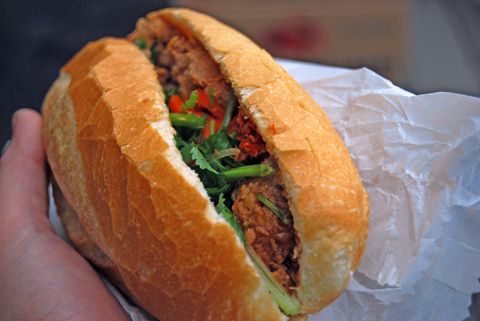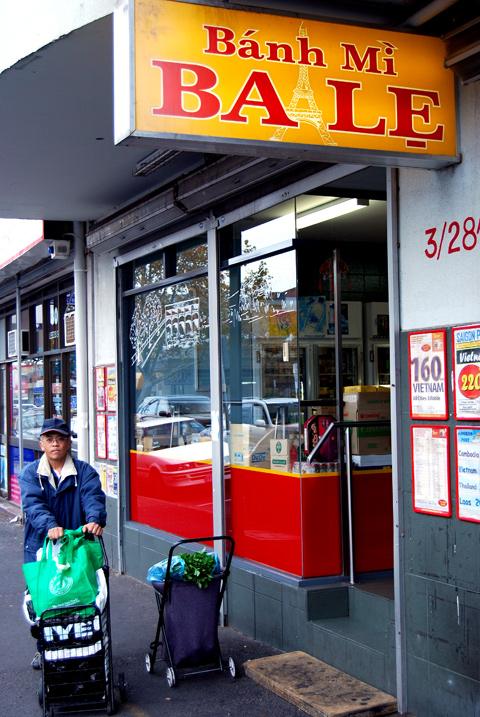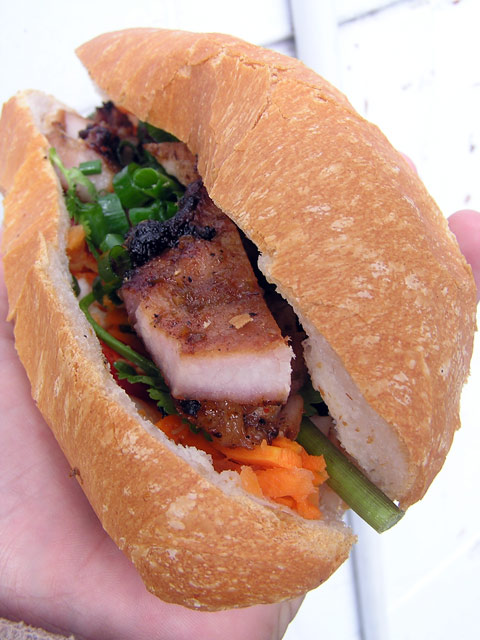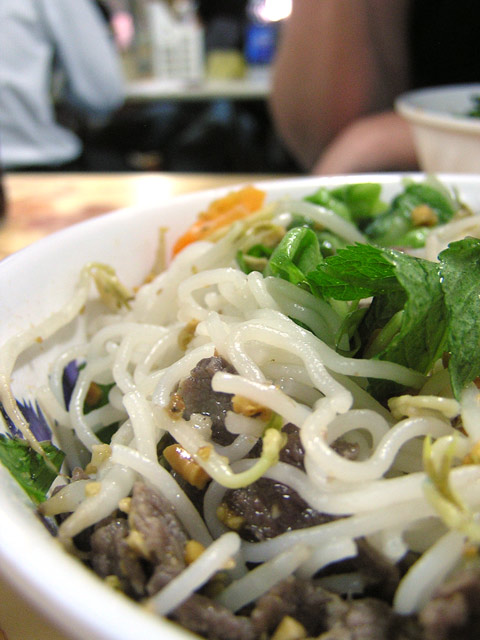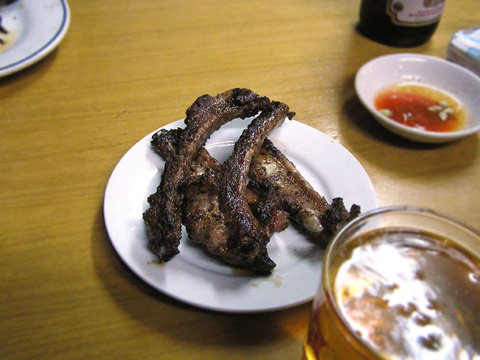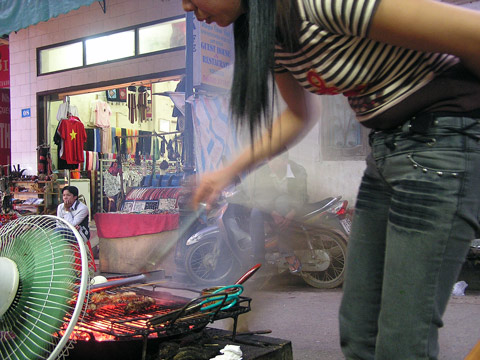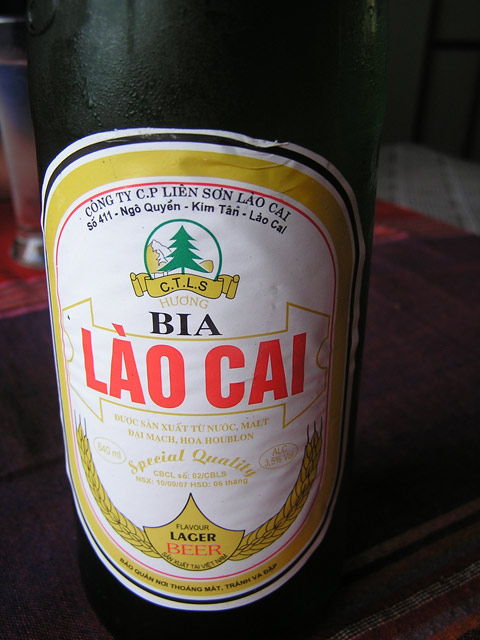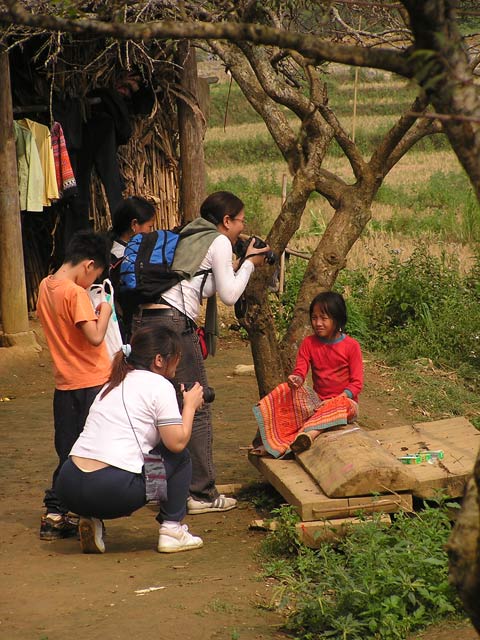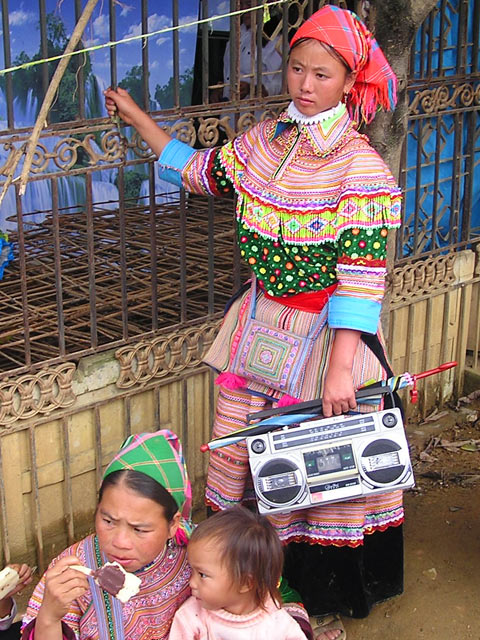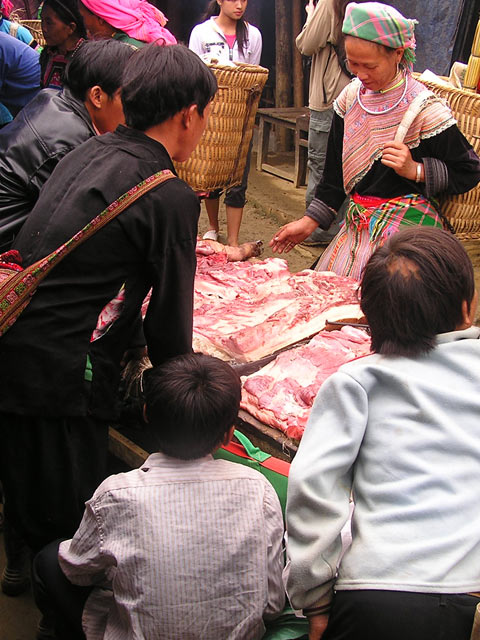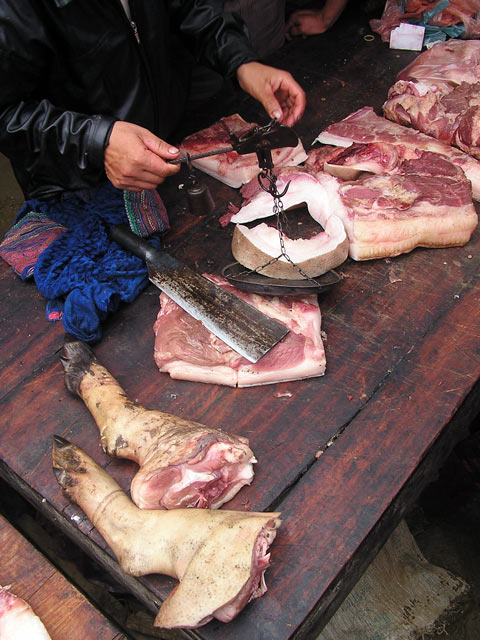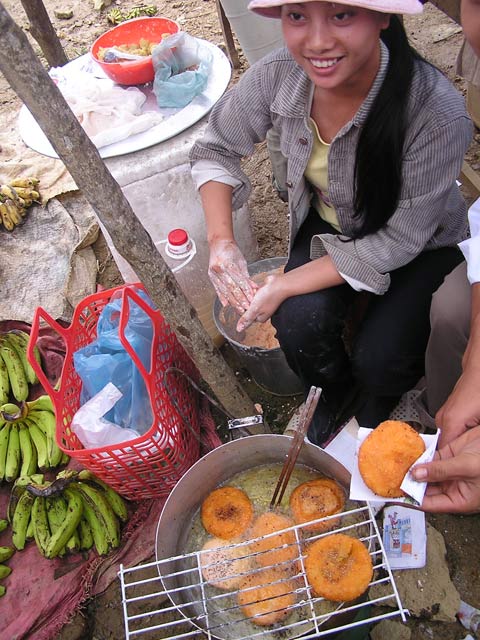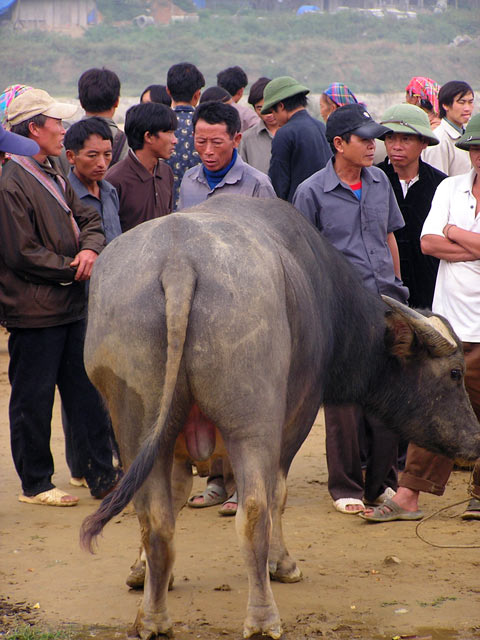Bánh mì xiu mai is the ultimate culinary mashup: a strange interpretation of Cantonese food in a French baguette via Saigon. The banh mi is your average baguette filled with a slap of pate, pickled carrot and stalks of coriander. The xiu mai part is utterly bewildering.
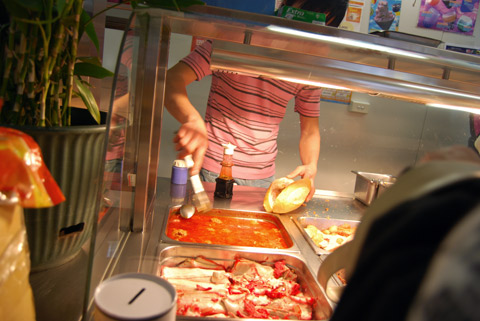
Picking the xiu mai from the sauce
The Vietnamese version of the Cantonese siew mai bears only the most basic resemblance to its Chinese compadre. It is both made from ground pork and is the size of a golf ball but lacks the thin wonton skin of the Cantonese dumpling. Instead of being gently steamed, the Vietnamese version is boiled in a tomato sauce.
The further that you delve into the origins and history of the recipe, the stranger it becomes. Andrea Nguyen from Vietworldkitchen hints that it might be a Vietnamese version of an Italian meatball sub and to illustrate the point, uses a modified Cambodian recipe for them. I’ve certainly seen them around Cambodia: there was a vendor in the Russian Market in Phnom Penh who sold them from an aluminum soup bain marie, in the same thin and oily tomato sauce. Graham from Noodlepie spots them about Saigon.
As far as I can find, there is no canonical Vietnamese recipe or even one that closely accords with the others. This recipe in Vietnamese, for example, calls for devilled ham along with ketchup. Another specifies Hunt’s brand tomato sauce and breadcrumbs. This lack of consistency and extensive use of more typically “Western” ingredients suggests that the xiu mai (for banh mi purposes) is a fairly recent addition to the Vietnamese culinary pantheon, even if the Cantonese siew mai have been cooked around Vietnam for millenia. Xiu mai just happened to be the most convenient word already in common usage.
This leaves the more difficult question of whether the banh mi xiu mai originated in Vietnam, and if so, how long has it been there?
If you happen to be in Footscray, Banh Mi Ba Le does an excellent banh mi xiu mai for A$3, with the bread amply soaking up the oily sauce and squishy pork ball. It comes a close second to the nearby banh mi thit nuong.
Address: 2/28A Leeds St, Footscray VIC 3011, Australia
